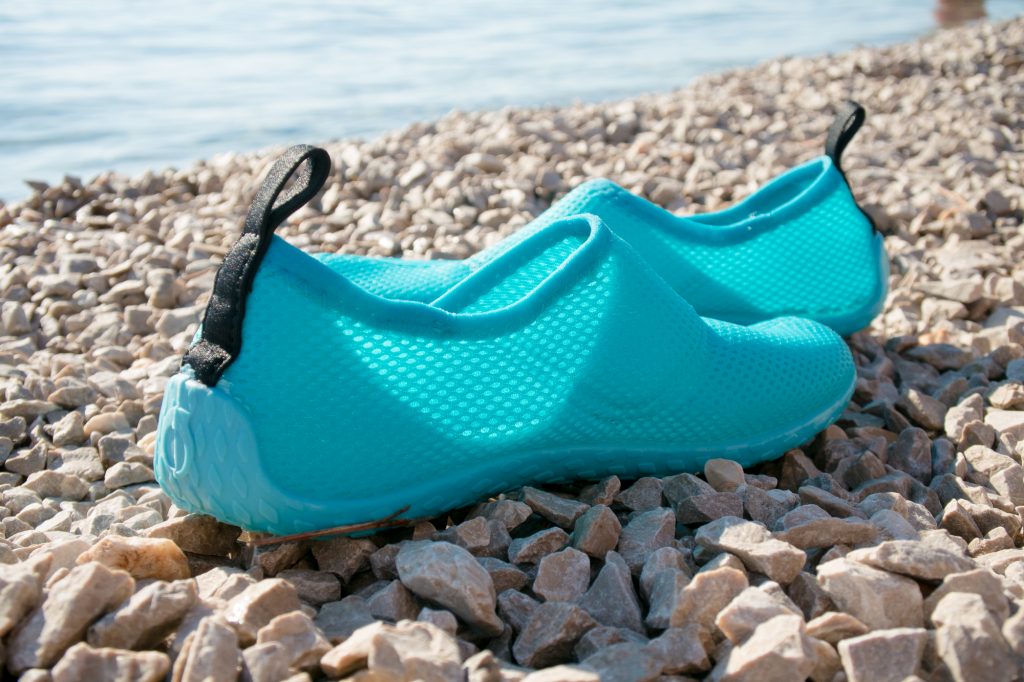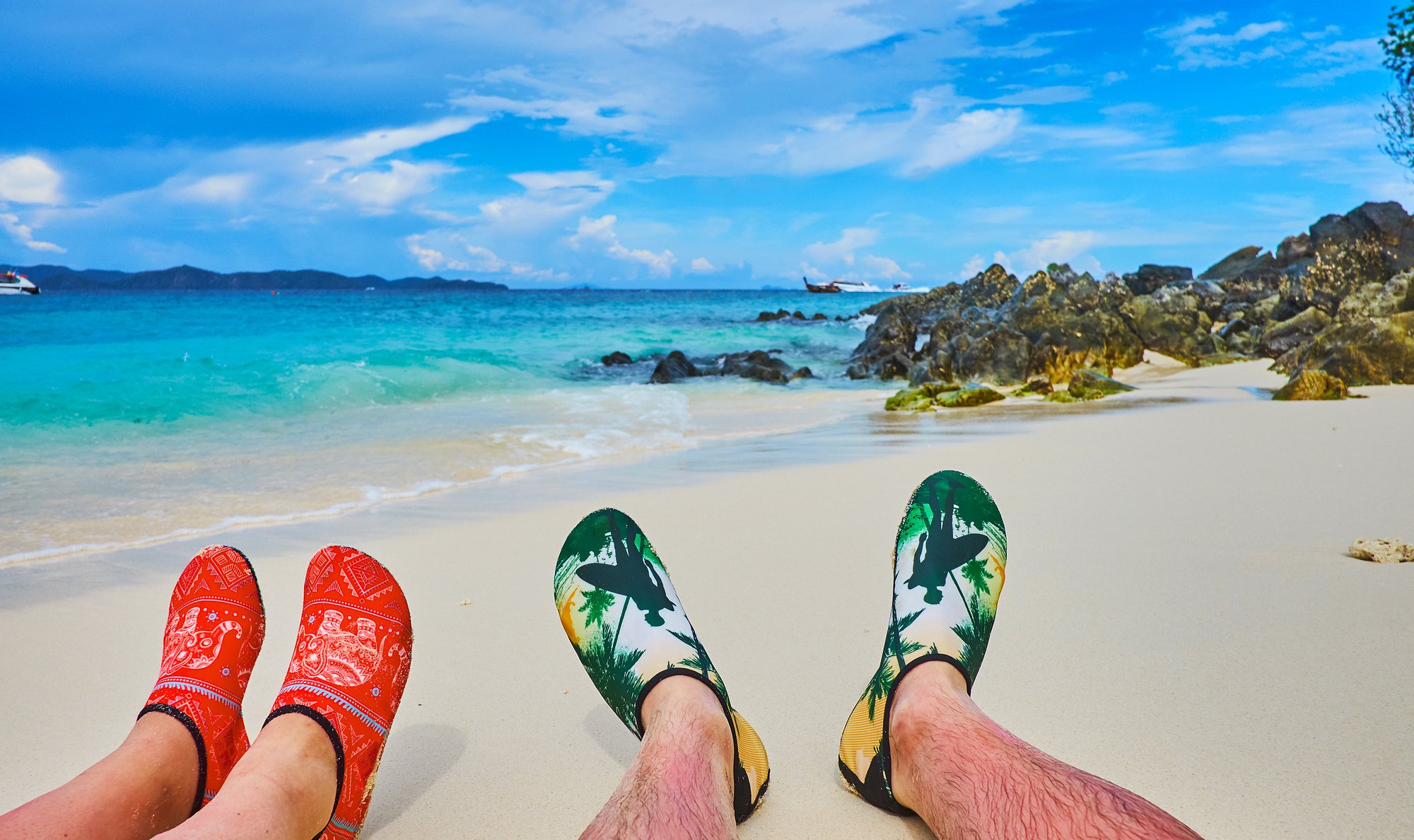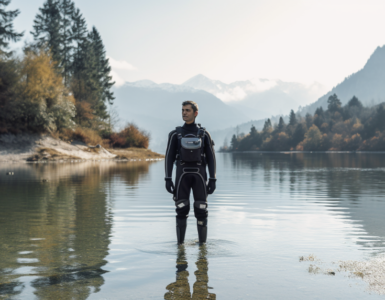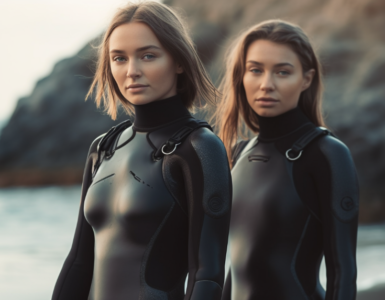Water socks, also called aqua socks, are special socks that are worn either in shoes that are made to get wet, or worn with snorkeling fins. On the other hand, water shoes can be worn either with socks or without, and are used for a variety of wet activities such as kayaking, rafting, river hiking, and so on.
We all love taking a trip to the beach, especially in the summer. But, chances are, you’ve experienced at least one instance of stepping on a sharp pebble or seashell, slipping on a wet and mossy rock, or getting your foot pierced with random pointy objects along the beach and on the seafloor.
This is why it’s really important to have the right footwear for these kinds of activities. The only question is, what type of footwear should you use? Below, we’ll talk about the differences between water socks vs water shoes.
Water socks vs water shoes
Both water socks and water shoes are special footwear made to use in wet conditions, such as in the pool or at the beach. But, while these two terms may often be used interchangeably, there’s actually several important differences between the two.
To put it simply, water socks are special socks that you wear to protect your feet from friction during water activities, while water shoes are special shoes designed to protect your feet from hazardous elements both in and out of the water. If you want to know more about these two types of footwear, read on further.

What are water socks?
Water socks are specialty socks that may look like your everyday socks, but are actually made out of specific materials such as lycra and neoprene, unlike your normal cotton, wool, and other fabrics. These materials are longer lasting and offer a more adjustable fit. Neoprene socks, for one thing, are really lightweight and stretchable.
These socks also come in various heights, ranging from ankle high to high tops, with many featuring adjustable ankle cuffs so you can modify the fit and ensure that the socks stay up while you’re engaging in activities like swimming or walking along the beach.
That said, water socks are usually available as one size fits all products (in terms of foot size), although you can also avail them in customized designs and with fitted heels.
What are water socks used for?
Water socks are typically worn by snorkelers and divers in order to act as a barrier between their feet and their snorkeling fins. This way, excessive rubbing can be avoided, which usually results in blisters and chafing, since the rubbing of skin and plastic creates unwanted friction.
Apart from this, water socks, specifically the high top designs, are also often worn together with low cut water shoes for added protection against common hazards in the sea, such as pointed objects and even jellyfish stings.
Moreover, water socks are great for cushioning the feet and keeping them warm and dry even when submerged in water for a long period of time.
What are water shoes?
Water shoes may greatly vary in appearance, much like your typical sneakers and rubber shoes. Generally, however, water shoes feature a breathable mesh top and sturdy yet flexible rubber soles.
The soles are specifically designed to offer maximum comfort and traction when walking along wet and slippery surfaces. Meanwhile, the mesh top allows for ventilation, so your feet can breathe, and also so any water that enters the shoes can get out quickly. This way, the shoes don’t stay wet for long, nor do the shoes become water-logged.
Water shoes are often sold in easy slip-on designs, which are perfect for simple everyday activities such as walking and swimming, but there are also plenty of lace-up water shoes that are made for more intense activities such as hiking and crossing streams and rivers.
What are water shoes used for?
Water shoes or swim shoes are the perfect shoes to wear in water, since they guarantee the comfort and protection you need from the outdoor elements, whether it’s sand, rocks, gravel, and random objects on the seafloor, the river bed, or even in the pool.
These shoes are also excellent to wear while engaging in water sports like kayaking and paddle boarding, and other outdoor activities such as trail hikes and camping trips.
More than all that, however, water shoes are highly versatile and functional all around gear that you can use just about everywhere, even for daily activities. Think of it this way- you can wear your water shoes to go swimming in the morning, and keep them on to meet up with friends for lunch. They are stylish and they dry quickly, so you shouldn’t have a problem.
Do water socks work?
Many people can’t help but wonder whether water socks actually work. After all, the material seems a bit uncomfortable, and given that snorkeling fins are also made of neoprene, how can neoprene socks claim to protect your feet from rubbing against similarly made fins?
Well, even if you get the perfect sized fins, there will always be a bit of room that can lead to all that skin to neoprene rubbing, and snugly fit water socks prevent that. They also offer you added grip and protection when walking on the beach, especially on rocky shores. Plus, when worn with water shoes, these socks can give you extra protection against jellyfish stings.
Should you wear water socks with water shoes?
If you want to do a lot of exploring and strolling around the beach, especially if the seafloor is particularly rocky, wearing the right footwear is always important, and this means either water socks or shoes. But, should you wear them together?
The answer is, it’s up to you. It’s not exactly necessary, but water socks do keep your feet warm and dry, and together with water shoes, you can be sure that your feet are safe from jellyfish stings and other hazards.
Which is the right footwear for you?
It’s always a good idea to have both water socks and shoes in hand so you have something to wear whenever you explore the great outdoors. But if you are more into certain activities than others, certain footwear will be more worth investing in.
That said, regardless of which one you opt for, it’s always important to find a brand that guarantees quality and reliability. To give you an idea, Nike water shoes are one of the most popular brands when it comes to footwear for swimming.
Intended use
If you are choosing between neoprene socks and neoprene shoes, for example, you need to base your decision on your needs and your usual hobbies. These two types of footwear come with different features and are meant for different purposes, so identifying your needs will help you pick the right footwear for you.
Or, if you want something that’s meant for wading in the pool, you should find specially made water shoes for pool. These swimming pool shoes will be slightly different than the usual sea or aqua shoes.
Feet size
Getting the right size of footwear is always important, and this is even more so if we are talking about footwear for wet activities, since the weight of the water alone can make your shoes come off at any time. Finding the right size is also important so you don’t experience any issues associated with ill sized footwear.
While water socks are usually sold as one size fits all, water shoes are a different matter. You’ll even find water shoes for men, and water shoes for women, with different sizing for each. When buying water shoes, be sure to check the manufacturer’s sizing guide to make sure you’re getting the right size of shoes for your feet.
Overview
No matter what activity or sport you are engaging in, it’s always important to wear the right kind of footwear to keep your feet comfortable, safe, and protected, so you can focus on enjoying everything that’s happening around you.
Water socks are specially designed socks for water activities such as snorkeling. They keep your feet warm and dry, offer insulation, and keep your heels protected against vulnerabilities such as chafing and blistering.
Meanwhile, water shoes are made for water sports and other outdoor activities such as boating, kayaking, and strolling on the beach, but they can also be used for regular daily activities. These are versatile shoes that are breathable, comfortable, and flexible.




